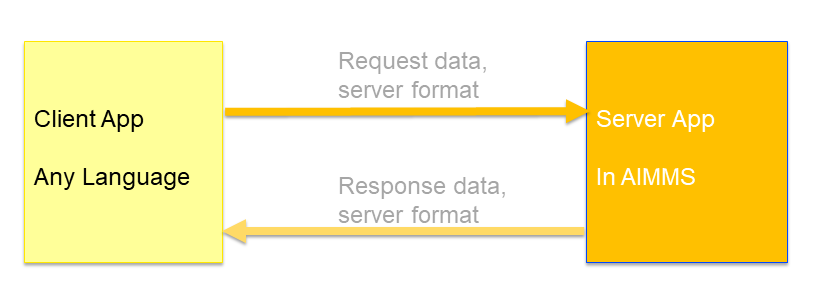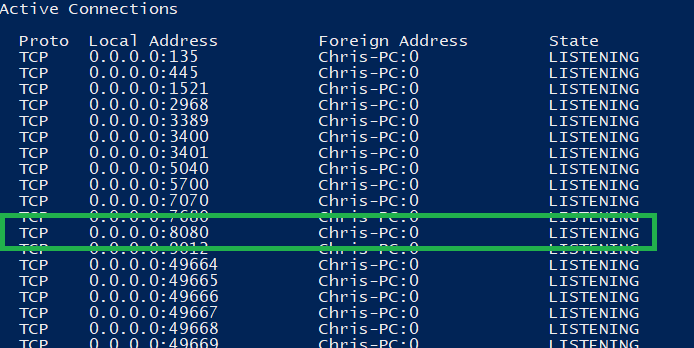Development Architecture of an AIMMS Service
The development of an AIMMS service is based on the usual client-server architecture:

Here the implementation language of the server is filled in: AIMMS.
The important parts of this generic architecture to be detailed are:
Where is the host of the service provided?
How do clients communicate with the service provided?
Each of these two parts will be detailed in a separate section below:
Hosting the Service
An AIMMS service can be hosted on:
localhost: A Windows machine with AIMMS Developer, or
AIMMS Cloud: An AIMMS cloud environment.
The specifics of hosting your application in these two environments are provided in the two subsections below:
Using Localhost to Host your AIMMS Service
Assuming the services are defined in your application you can activate the service from within AIMMS Developer using dex::api::StartAPIService .
After calling this procedure (for instance by running the procedure pr_startService of the sample app), you can verify that the service is available using
netstat -a in a command prompt. This should give that port 8080 is being listened to:

You can configure the port number and max request size if needed, see this documentation for details.
Using AIMMS Cloud to Host your AIMMS Service
Creating an .aimmspack from your server app and publishing it on an AIMMS cloud suffices to make the service available on that AIMMS Cloud.
After publishing on an AIMMS Cloud, it is not needed to call dex::api::StartAPIService for activating the service.
Communication by Clients of an AIMMS Service
The time needed to solve an optimization problem varies from seconds to hours. Therefor the service to solve an optimization problem is separated into the following steps:
Submit: Initiate the solving of an optimization problem by providing the necessary data.
Monitor: Regularly poll the status of the job at hand.
Retrieve: Retrieve results.
The server process that is initiated, monitored, and retrieved is called a task in AIMMS Rest API terminology.
The URL Prefix
Then the variations can be handled by the url_prefix, by defining it as:
On Cloud:
https://{cloud}/pro-api/v2/tasks/Needed: apiKey header when using this
url_prefix.
On local host:
http://localhost:{port}/api/v2/tasks/Don’t provide apiKey header when using this
url_prefix.
The HTTP Requests
With this prefix, the HTTP requests are:
Submit: Initiate a task.
url_submit, is the URL to submit a task:On Cloud:
{url_prefix}/{app}/{ver}/{service}On local host:
{url_prefix}/{service}
The request body should provide the data to execute the task. Clearly, this data can contain references for a database or data lake to obtain the actual data.
The response body is a task id, and this task id is used in the following steps.
Monitor: Monitor a task.
url_poll, is the URL to poll for the status of a task:{url_prefix}/{taskid}There is no request body, and the response body is a Json file containing the task status amongst others.
Retrieve: Retrieve response
url_responseis the URL for the response of a task:{url_prefix}/{taskid}/responseThere is no request body, and the response body is defined by the service at hand.